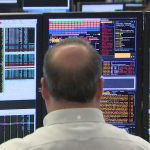Anyone with children aged between nine and 15, its core demographic, will require no introduction to Roblox.
The computer game developer’s online platform is used by an estimated 37.1 million players on a daily basis and it has also spawned a side industry of participants who film their exploits and share them on social media platforms like TikTok and YouTube – which also attract huge audiences.
Today the company floated on the New York stock exchange and the shares rocketed at the open from the “reference price” of $45 each to an “indicative” range of $67-$72.
At the mid-point of that range, $69.50, that values Roblox at $46.3bn.
Not bad for a business founded just 16 years ago and which, according to its latest filings, reported a net loss of $195m during the first nine months of 2020.
The company was valued at just $4bn a year ago.
Roblox has come to market via a so-called ‘direct listing’.
This method is being increasingly favoured by a number of tech companies, including the data analytics company Palantir, the workplace messaging business Slack and the streaming service Spotify.
In a direct listing, no shares are sold in advance, as is usually the case in an initial public offering (IPO).
Instead, shares in the company are simply listed, with the price being determined by buy and sell orders.
The setback of such an approach is that companies are unable to raise money – it is simply a way for existing investors to sell some of their shares.
But there are also advantages.
The chief one is that the company coming to market saves millions of dollars by not paying investment banks to do what they would normally in an IPO, chiefly organise presentations to investors and underwrite the issue, ensuring any shares going unsold are mopped up.
So what is the investment case?
Well, Roblox is marketing itself as a company very different from other computer games developers, which rely on big-budget blockbuster releases throughout the year.
By contrast, Roblox depends on “user-generated content, built by our community of developers and creators”.
The company likens itself to a YouTube for games fans.
Participants create their own games – there were more than 11 million launched last year alone – and these are free to play.
Players then pay for ways to enhance their user experience – allowing them to advance in their game, or clothe and equip their avatar – with a virtual currency called Robux.
The revenues from this are split between the company itself and those who develop the games on its platform.
A number of the platform’s leading content creators are said to make more than a million dollars a year from the activity.
The theory is that, as the number of users grows, they will spend more Robux, in turn providing an incentive for developers to come up with increasingly engaging content.
The company also seeks to build its user base through a virtuous circle.
Users typically invite their friends to play with them who, in theory, invite their friends in turn.
“The more friends that each of our users has playing together on the platform, the more valuable and engaging the platform becomes,” Roblox says.
“This drives more users to our platform through word of mouth from their existing friends on the platform.”
The platform has also made a cult figure of David Baszucki, the chief executive of Roblox, who co-founded the business with the late Erik Cassel in 2004.
Canadian-born Mr Baszucki, who before today’s stock market debut owned 70% of the shares in Roblox, is known on the platform as “Builderman” and still regularly plays the games.
He said it was a “great day for the Roblox community”.
Mr Baszucki said comparisons with existing computer games firms, such as Activision Blizzard, were unhelpful.
He told CNBC: “We’re in a whole new category.
“It’s a unique category because it allows people to come together and do things together.
“We believe it’s a new category.”
Mr Baszucki said an important part of the community on Roblox was that, unlike some other social media platforms, it was a “safe and civil place”.
He also stressed the company’s contribution to wider society in helping children and young adults to learn to code and gain skills as software developers.
One big question a lot of investors have is whether the company’s meteoric growth – sales rose from $325m in 2018 to $508.4m in 2019 and to $923.9m in 2020 – is sustainable.
Sales momentum clearly rose during the pandemic, as people were unable to leave home for large parts of the year, but Mr Baszucki believes the trend will continue.
He added: “What’s really exciting is Roblox bringing people together and helping people stay together and that will continue.
“That virtual economy has been scaling with our user and engagement growth.
“We’re seeing developers come onto the platform.”
Yet many will be sceptical about this company’s ability to turn those sales into profits.
The listing particulars contain a remarkable 52 pages of risk factors, including regulatory and legal factors, a future perception that it is failing to protect users, systems outages and, potentially, the illegal use of Robux.
Significantly, the company also admits in the particulars that only a small portion of its users regularly purchase Robux through subscriptions and pay for experiences and virtual items.
It is therefore dependent on developers to come up with content where more users will choose to buy digital items to enhance their enjoyment.
The prospectus notes: “If users fail to purchase digital items at rates similar to or greater than they have historically and if we fail to attract new paying users, or if our paying users fail to continue interacting with the platform and purchasing digital items as they increase in age, our revenue will suffer.”
So would-be shareholders have been warned.
There is no denying the spectacular growth of Roblox or its irresistible appeal to tens of millions of Generation Z consumers around the world.
Its users spend more time on Roblox than they do on any social media sites or on entertainment platforms like Netflix.
These are the key consumers of the future.
The big question is whether the company can translate all those hours of eyeballs into profits.






















